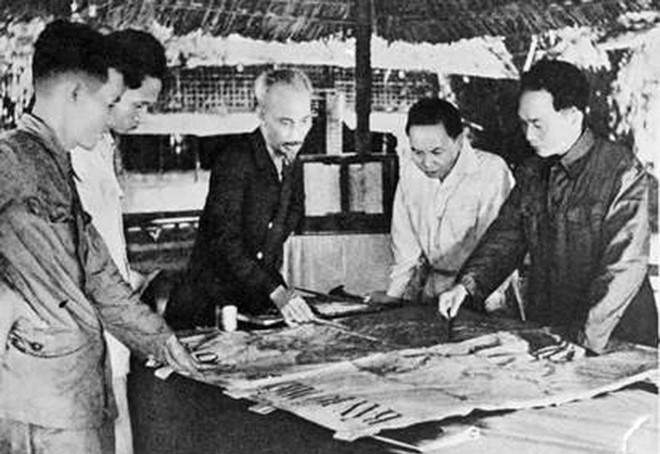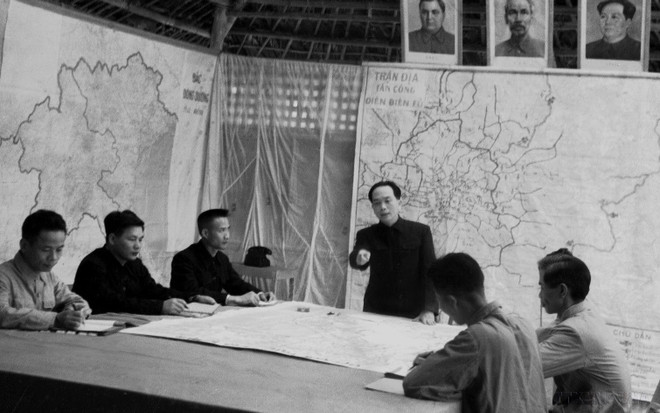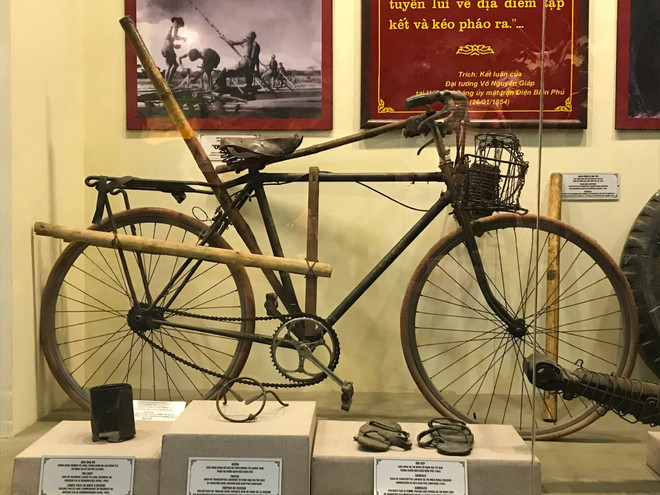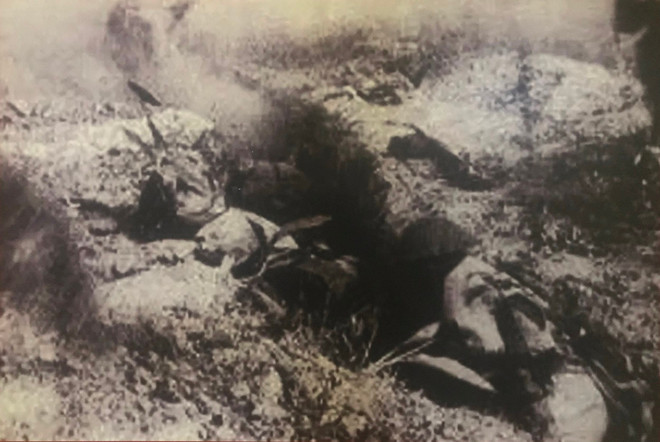Hanoi (VNA) – “It took nine years to secure Dien Bien/The victory was a red flower and a golden epic.” These lines of verse, part of a poem titled “Thirty years we have the Party in our life” by To Huu, describe the pride that millions of Vietnamese people take in the Dien Bien Phu Victory. It “resounded across the five continents and shook the globe”.
The success of the resistance war against French colonialists, with its peak being the Dien Bien Phu Campaign – an epic in the Ho Chi Minh era, was the victory of the Vietnamese people’s patriotism, indomitability, and unyieldingness nurtured for thousands of years.
“Steady attack, steady advance”
Shortly after the success of the August Revolution in 1945 that led to the founding of the Democratic Republic of Vietnam (now the Socialist Republic of Vietnam), the French colonialists, backed by imperialist forces, returned to invade the country. On December 19, 1946, the entire Party, people, and army responded to President Ho Chi Minh’s appeal for nationwide resistance to embark on a protracted resistance war full of hardships against the invaders.
In 1953, the Vietnamese people and army seized control over battlefields, creating an advantage in terms of forces in favour of Vietnam.
To remedy the situation, in the aumtum - winter of 1953, the French colonialists and US interventionists built the Navarre Plan that strongly increased military power and funding with the aim of destroying the majority of Vietnam’s regular troops, taking control over the entire territory of Vietnam, and pacifying South Indochina.
The plan was the final effort of the French colonialists and US interventionists to regain the decisive military proactiveness on the battlefield, serving as the basis for a political solution beneficial to them.
Discovering the direction of Vietnam’s strategic attacks on the Northwest, Lai Chau and Northern Laos, the Command of France’s expeditionary troops ordered military parachuting to occupy Dien Bien Phu.
The heavily fortified base of Dien Bien Phu was divided into the northern, central, and southern zones that comprised 49 entrenched fortifications. It gathered all the paratroopers and 40% of the most elite mobile force of France in Indochina. At the airfields of Muong Thanh and Hong Cum, nearly 100 flight departures and arrivals occurred each day, capable of transporting about 200 - 300 tonnes of cargo and parachuting 100 - 150 soldiers while ensuring support for the French troops here.
Dien Bien Phu was the strongest complex of fortifications of France in Indochina at that time. General Navarre described this place as an “indestructible fortress” attracting and destroying Vietnam’s regular troops.
Grasping every plot and action of the enemy and analysing the situation, on December 6, 1953, the Politburo decided to launch the Dien Bien Phu Campaign, approved the combatant plan of the General Military Commission, and assigned General Vo Nguyen Giap, Politburo member, Minister of National Defence and Commander-in-Chief of the Vietnamese army, to act as Secretary of the Party Committee and Chief Commander on the battlefield.



When assigning tasks to General Vo Nguyen Giap, President Ho Chi Minh said: “Fight only if you're sure of victory. If you're not sure, don't fight”. The leader’s instruction resulted in a historic decision in the victorious campaign. To secure a definite victory, right before the moment of the campaign launch - when all the troops and weapons were in place, Commander-in-chief General Giap carefully decided to pull artillery out of the battlefield, rescheduling the campaign launch for March 13, 1954, about one and a half months later than the initial plan – on January 26.
Forty years after the historic Dien Bien Phu Campaign, Giap recalled: “On that day (January 26, 1954), I made the most difficult decision in my commander’s life, which was deciding to shift the combat strategy from fast attack, fast victory to steady attack, steady advance.”
Miracles of logistics, trench digging
While the French colonialists invested all-out efforts in building their base, the Vietnamese troops silently moved in and pulled artillery onto the high hills surrounding the valley. To do such a seemingly unimaginable work, the Vietnamese army and people carried out what can be considered as a logistics miracle.
To deliver supplies to Dien Bien Phu, Vietnam mobilised all vehicles, from motorised to rudimentary ones, such as automobiles, boats, rafts, wheelbarrows, pack-bicycles, buffalo carts, and papooses to transport tens of thousands of tonnes of weapons and food to the battlefield.

Statistics released after the victory show that Vietnam transported 25,056 tonnes of rice, 268 tonnes of salt, 907 tonnes of meat, 1,860 litres of cooking oil, 280kg of animal fat, thousands of tonnes of vegetables, and 917 tonnes of other foods.
Up to 261,451 people, 628 automobiles, 20,991 pack-bikes, 11,899 rafts, 914 horses, and 736 buffalo carts were mobilised to transport supplies.
Meanwhile, as ordered by the Campaign Command, Vietnamese troops pushed ahead with digging trenches to tighten the siege. Trenches were mainly dug at night and across the battlefield. This was truly a struggle full of hardships and sacrifice. Soldiers had to exhaust efforts for 14 - 18 hours per day and use simple tools amid harsh weather conditions and the rain of French bullets.
As of the end of March 1954, Vietnamese troops dug another nearly 100km of trenches for movement and combat, and built tens of thousands of fortified positions. Some trenches even approached the enemy’s barriers.

Over more than two months, thousands of civilians and soldiers, using their physical strength and rudimentary tools, repaired and opened hundreds of kilometres of roads to Dien Bien Phu.
56 days for making globe-shaking victory
After finishing preparations, the Vietnamese army opened fire on the Him Lam fortification on March 13, 1954, launching the Dien Bien Phu Campaign.
The campaign took place in three phases over two months. After 56 days and nights of fighting bravely, ingeniously, and creatively, the Vietnamese army and people completely destroyed the Dien Bien Phu military base, killed or caught the entire enemy, shot down 62 aircraft, and seized all the weapons, equipment, and supplies of the French colonialists.
President Ho Chi Minh affirmed that the Dien Bien Phu Victory was a brilliant golden milestone in history.
The complete success of the Dien Bien Phu Victory made the decisive contribution to force the French colonialists to sign the Geneva Accords on July 21, 1954 that recognised the independence, sovereignty, unity, and territorial integrity of the three Indochinese countries, thus gloriously wrapping up the nine-year resistance war (1945 - 1954)./.




























